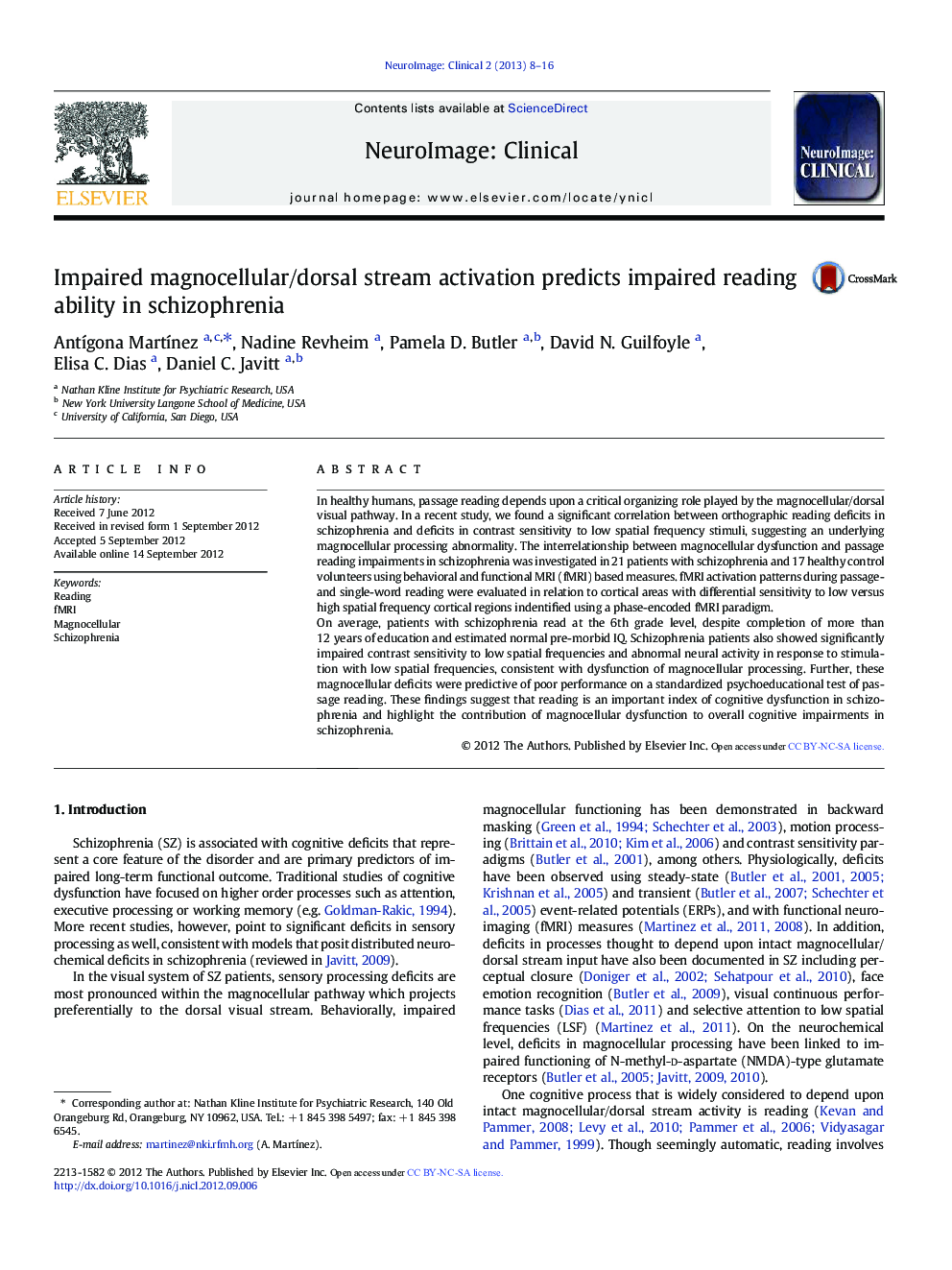| Article ID | Journal | Published Year | Pages | File Type |
|---|---|---|---|---|
| 3075483 | NeuroImage: Clinical | 2013 | 9 Pages |
In healthy humans, passage reading depends upon a critical organizing role played by the magnocellular/dorsal visual pathway. In a recent study, we found a significant correlation between orthographic reading deficits in schizophrenia and deficits in contrast sensitivity to low spatial frequency stimuli, suggesting an underlying magnocellular processing abnormality. The interrelationship between magnocellular dysfunction and passage reading impairments in schizophrenia was investigated in 21 patients with schizophrenia and 17 healthy control volunteers using behavioral and functional MRI (fMRI) based measures. fMRI activation patterns during passage- and single-word reading were evaluated in relation to cortical areas with differential sensitivity to low versus high spatial frequency cortical regions indentified using a phase-encoded fMRI paradigm.On average, patients with schizophrenia read at the 6th grade level, despite completion of more than 12 years of education and estimated normal pre-morbid IQ. Schizophrenia patients also showed significantly impaired contrast sensitivity to low spatial frequencies and abnormal neural activity in response to stimulation with low spatial frequencies, consistent with dysfunction of magnocellular processing. Further, these magnocellular deficits were predictive of poor performance on a standardized psychoeducational test of passage reading. These findings suggest that reading is an important index of cognitive dysfunction in schizophrenia and highlight the contribution of magnocellular dysfunction to overall cognitive impairments in schizophrenia.
